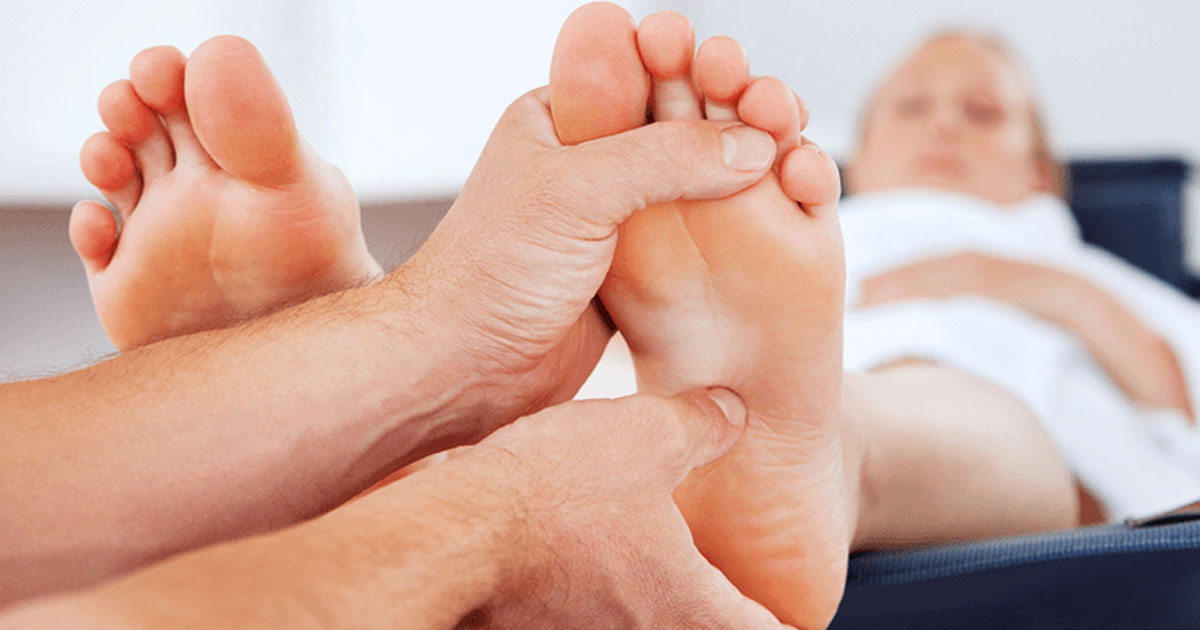Treatment Options For Peripheral Arterial Disease
Peripheral arterial disease develops when plaque, which consists of substances such as cholesterol, fat, and calcium, builds up inside artery walls and causes narrowing. This leads to problems with blood circulation because of reduced blood flow to the brain, limbs, stomach, and kidneys. Peripheral arterial disease can also be caused by blood clots in the arteries, limb injuries, or abnormal structure of muscles or ligaments. Symptoms include weakness, numbness, and pain in the legs. Peripheral arterial disease patients also suffer from leg pain when walking (claudication) and open sores that don’t heal properly. Risk factors for developing this condition include high blood pressure, smoking, diabetes, older age, and obesity. Treatment is geared towards symptom management and reducing the risk of heart attack and stroke. Learn more about treating peripheral arterial disease now.
Eat A Heart-Healthy Diet

Peripheral arterial disease patients tend to have elevated cholesterol levels, and following a heart-healthy diet can help to lower blood cholesterol levels. Diet changes and adjustments should include a healthy eating plan with lots of fruits and vegetables. A heart-healthy diet should also include nutritious and low-fat foods and dairy products. Avoid foods containing trans fat (partially hydrogenated oils). Try to cut back on foods with lots of saturated fat or cholesterol and stick to lean cuts of meat and remove poultry skin. Use olive oil instead of coconut or palm oil. Patients should also limit their consumption of sugar, salt, and alcohol. Overweight or obese patients should work with a doctor to create a reasonable weight-loss plan to maintain a healthy weight.
Learn more about treating peripheral arterial disease now.
Get Active

Individuals with peripheral arterial disease usually experience pain while walking or engaging in other activities that require movement. Although it may be difficult, patients have to get active to combat the symptoms of the disease. Exercise is crucial to the management of peripheral arterial disease in many ways. Regular exercise for about thirty to forty-five minutes a few times a week can help condition muscles so the patient's body can use oxygen more efficiently. Doctors often recommend a supervised exercise program and medication may be able to lessen leg pain by improving blood flow to your legs. Simple walking regimens can help ease patients into routines using leg exercises and treadmill workouts to increase the distance walked before feeling pain. This distance is often used to gauge the success of a treatment plan. Many patients show improvement in a month or two after starting an effective exercise program. A claudication exercise rehabilitation program can help peripheral arterial disease patients with intermittent claudication. This program works by alternating between activity and resting.
Regular exercise and physical activity is the best way for individuals to prevent this condition, and it's one of the most effective treatments that can substantially improve symptoms.
Discover the next method of treating peripheral arterial disease now.
Taking Care Of Your Feet

Taking care of your feet may sound unusual, but it's especially important for individuals with peripheral arterial disease. These patients generally have poor blood circulation, which can affect the healing time of injuries and sores on the legs and feet. Peripheral arterial disease patients who also have diabetes have an even higher risk of complications and infection from wounds. Even a small cut should receive prompt care to ensure proper healing. In addition, patients should make sure their footwear is the proper size and fits well. Thick, dry socks should be worn with shoes. Basic everyday care should include washing and thorough drying of the feet. Trim and file nails regularly and carefully. Patients should keep their feet moisturized to minimize occurrences of cracks in the skin, but should not put lotion in between the toes or on cuts or sores. If any fungal infections or similar issues appear, treat them right away. Bunions, corns, and calluses should be treated as well. Patients should examine every part of their feet daily and look for any sign of injury, such as scratches, cuts, sores, blisters, or ingrown toenails, and notify a doctor should anything arise.
Learn more about treating peripheral arterial disease effectively now.
Medication

Some cases of peripheral arterial disease can be managed by lifestyle changes, while others combine these changes with medication. Most peripheral arterial disease patients follow a daily acetylsalicylic acid regimen. Medicine may be recommended in addition to lifestyle changes to prevent blood clots, increase blood flow to the legs and feet, and lower blood pressure. Cholesterol-lowering medications can reduce the risk of heart attack and stroke. Reducing 'bad' cholesterol is particularly important for patients with additional risk factors like diabetes or smoking. Individuals with both peripheral arterial disease and diabetes usually need prescription medication to control their blood sugar levels. Studies have shown some medications can improve pain-free walking in patients with intermittent claudication by sixty percent. Cilostazol increases blood flow to the limbs and treats leg pain and other symptoms of claudication. Thrombolytic therapy injects clot-dissolving drugs directly into the blood clot to break it apart.
Continue reading for the details on additional peripheral arterial disease treatment methods now.
Surgery

More severe cases of peripheral arterial disease may require surgery to treat symptoms, especially those related to claudication. Angioplasty can reopen the clogged artery, widen it, and increase blood flow. This procedure is performed by threading a small hollow tube called a catheter through a blood vessel to reach the affected artery. A small balloon attached to the catheter's tip is inflated to widen the area. Another tube made of mesh may be placed in the clogged artery to help keep it open. An atherectomy is an alternative to angioplasty. This operation removes plaque build-up with a minimally invasive endovascular surgical technique. Bypass surgery is another operation that can be done to improve blood flow. The doctor creates a blood vessel with man-made fabrics or by using a vessel from another area of the body. This blood vessel is used to redirect blood flow around the clogged artery. The newly created blood vessel is known as a graft bypass.